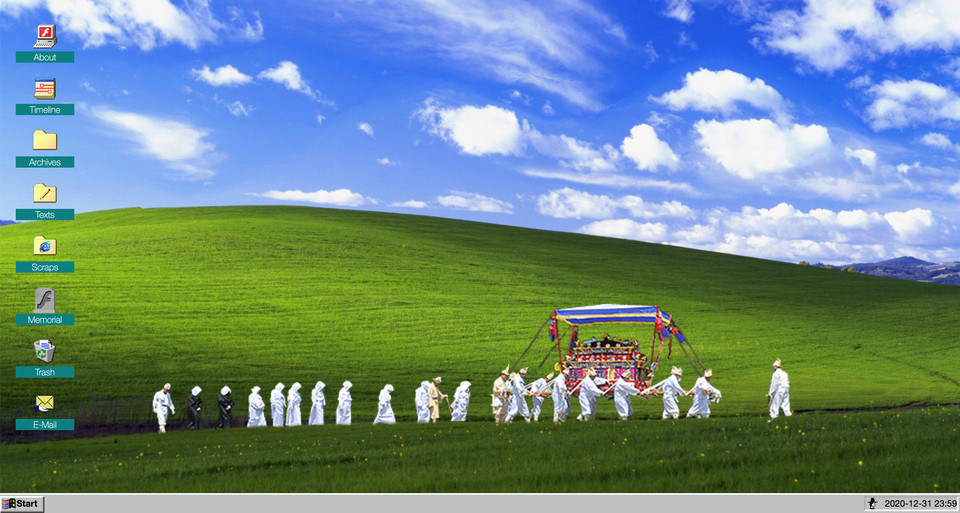
By Sunny Um Wired Korea
It brought joy to millions of internet users worldwide. It did not have a body but was seen ubiquitously in the world of the internet. It was once supported by many internet browsers. Now, Adobe Flash Player is awaiting its final day, slated for the last day of this year.
Adobe Flash Player, better known as Flash, is developed by a U.S.-based software company FutureWave in 1996. The plug-in program has supported multimedia files – from music to animation – on internet browsers. Later, developers started to create games with Flash as it gained more popularity in the market.
Flash may have been just an add-on to a web browser. Be that as it may, it existed ubiquitously, even in some people’s childhood memories of playing games and animations. For example, a Flash-run animation series called “Mashimaro” had recorded 10 million views in three months back in 2000.
“I still remember playing Flash-run games when I was young,” says Taehyun Kwon, an art critic and a freelance curator. “It has been part of our lives for so long – it was everywhere.”
To Leesun Park, an independent media researcher, Flash is also a fond memory. “Flash games used to be the first thing I played after school every day,” she says.
But the outdated plug-in saw its life coming to an end. Flash had little space in the online sphere, with newer multimedia players, such as HTML5, becoming more saturated and itself bearing several vulnerabilities.
Compared to its newer competitors, Flash was not the most secure plug-in. Attackers could breach into the user’s computer system via Flash, then install programs in the computer system or create accounts with the user’s personal information, according to the Center for Internet Security. Flash also topped Symantec’s annual list of vulnerable plug-in programs eight years ago.
Flash also does not run on touch-based devices, such as smartphones and tablets. In 2010, Steve Jobs wrote on Apple’s online news board that most websites would need to rewrite their codes to support Flash on devices that work with touches. Jobs then wrote: "If developers need to rewrite their Flash websites, why not use modern technologies like HTML5, CSS, and JavaScript?”
In 2017, Adobe announced that it would shut Flash down by the end of this year. Popular internet browsers, including Chrome, Internet Explorer and Firefox, have phased out Flash, and users are “migrating” to other multimedia players.
“Now only small businesses, such as local schools, or individuals have Flash-run websites. An increasing number of people are migrating to other plug-in programs every day,” Kwon says.
Many types of hardware and software have vanished with the rapid development of technology, but Flash’s scheduled death is different to Kwon and Park. It is more personal.
“To me, the death of Flash feels like saying goodbye to my childhood,” Park says. “It may be just an old technology becoming a thing of the past (as many other technologies have), but Flash has more personal value to many of us.”
So, the duo joined hands to hold what they called a “funeral” for the dying plug-in program.
Kwon and Park started a project called “R.I.P. Flash” to launch an archive where Flash-run multimedia materials, or Flash’s legacy, are stored. On their Javascript-based website, funded by the Korea National University of Arts, visitors can read researches and essays on Flash and find website links to Flash-run animations and games.
Visitors also can leave a goodbye message to Flash on the website. Many leave messages as if Flash had been their best human friend. A visitor named Milan wrote on the website: “We will miss you. I have so many great memories about playing those cool games as a kid. Goodbye old friend, goodbye.”
The duo says the number of daily visitors is increasing lately, with the website’s traffic about to reach the max level.
“Stories around Flash are endless, and perhaps that’s why many people are interested in the death of the program,” writes Kwon in his essay posted on the website. “We are preparing for a funeral. A funeral is not for the dead, but for people left behind. It is not for the past, but to see the future hidden in its legacy.”
Kwon and Park see this website as a way of conducting memory research on Flash. “Our project includes pieces contributed by many researchers who major in cultural studies, visual arts, and media archaeology,” Park says. “We collect personal stories on Flash and share them on our website, which I think is very meaningful.”
With six months left until the total shutdown, they say they would like more writers to post their pieces on Flash for lively discussions.
“When Flash is finally shut down, it doesn’t mean that the entire structure of websites would change dramatically. It would still be the same, maybe running with alternatives to Flash,” Kwon says. “But Flash played a major role in formatting Web 2.0, making the web more of an interactive space to use.”
와이어드 코리아=Sunny Um Staff Reporter
sunny@wired.kr
저작권자 © WIRED Korea 무단전재 및 재배포 금지
와이어드 코리아=Sunny Um Staff Reporter
sunny@wired.kr
저작권자 © WIRED Korea 무단전재 및 재배포 금지
이 기사를 공유합니다


 뉴스레터 신청
뉴스레터 신청